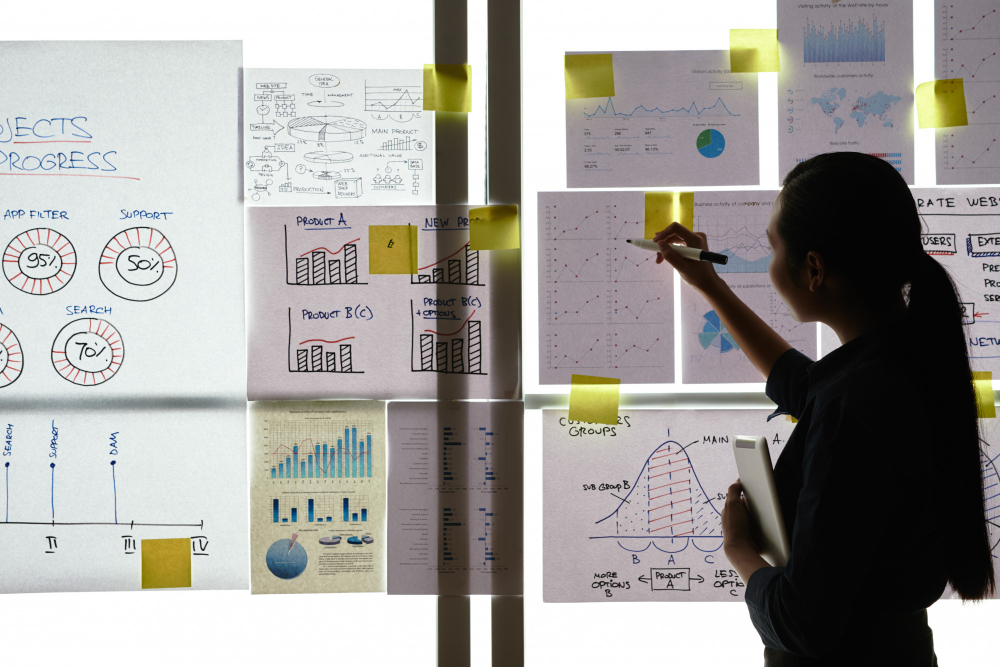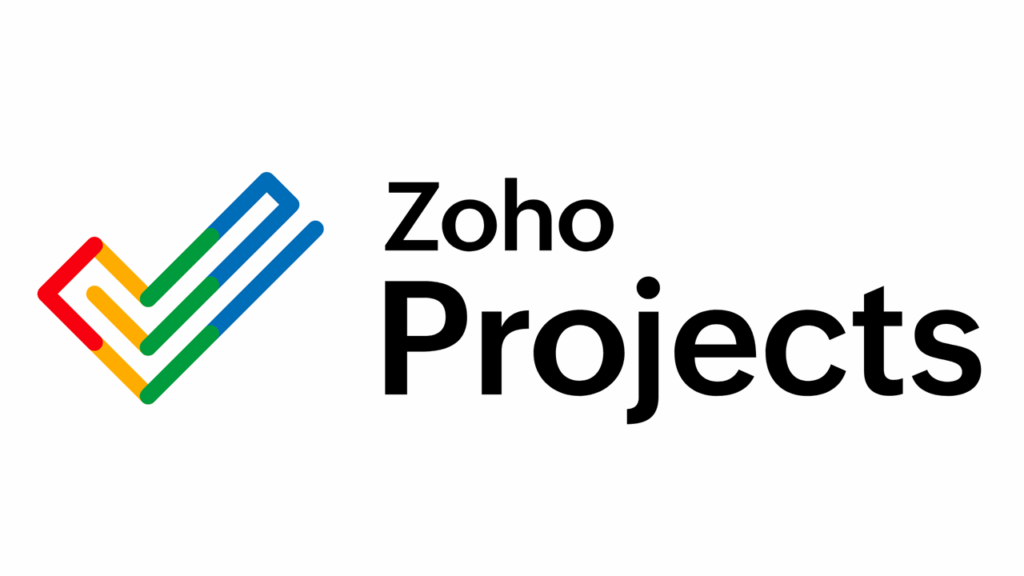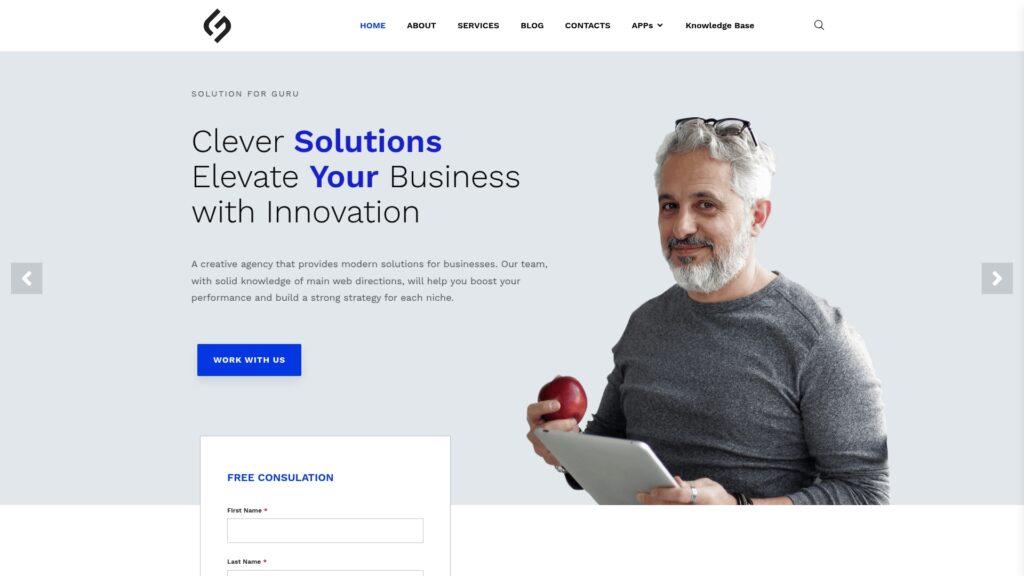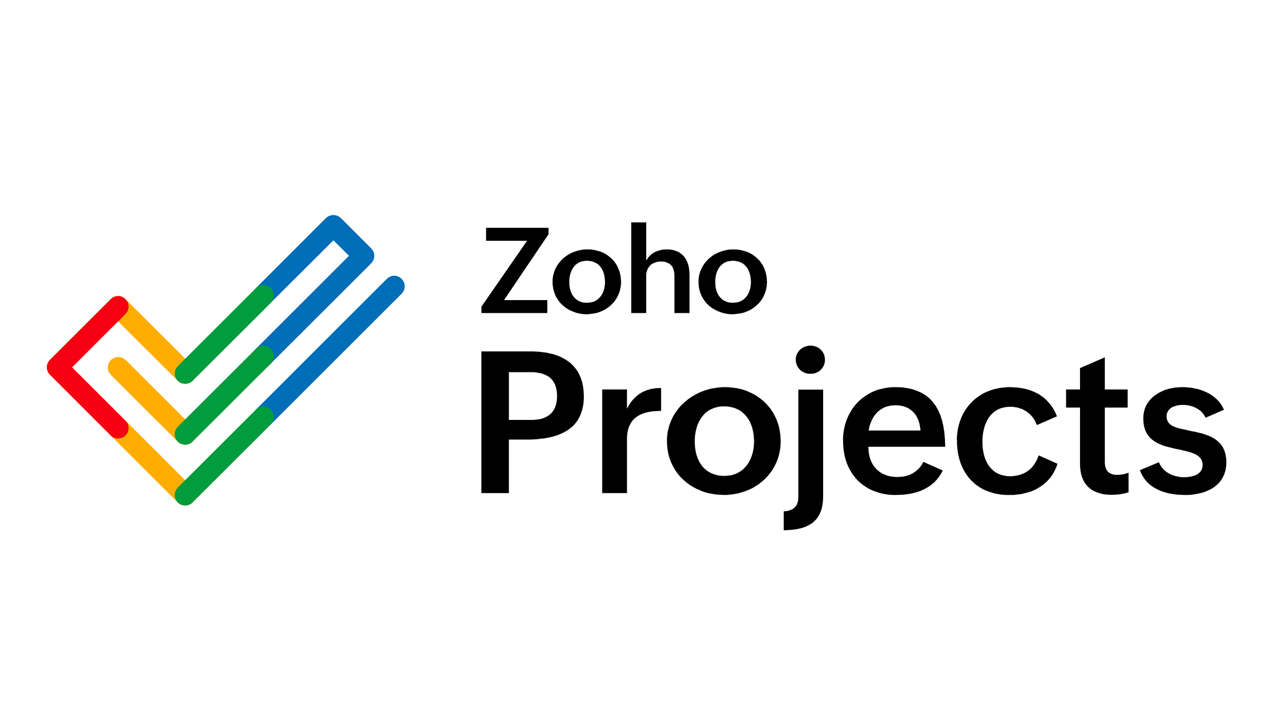How Do You Create a Comprehensive Project Management Plan That Ensures Success?

A project management plan serves as the roadmap guiding teams from initial concept through successful delivery and closure. Without a well-crafted plan, even the most talented teams struggle with unclear objectives, misaligned expectations, resource conflicts, and preventable risks that derail progress. In today’s complex business environment where projects involve diverse stakeholders, tight timelines, and competing priorities, a comprehensive project management plan becomes not just beneficial but essential for consistent success. This guide explores how to develop robust project management plans that provide clarity, enable coordination, and establish the foundation for exceptional project outcomes.
Table of Contents
- Quick Summary
- What Is a Project Management Plan and Why Is It Essential?
- What Are the Core Components of an Effective Project Management Plan?
- How Do You Develop a Project Scope Management Plan?
- What Should Your Schedule Management Plan Include?
- How Do Modern Platforms Support Project Management Planning?
- Summing up
- Frequently Asked Questions
- Why Partner with Solution4Guru for Project Management Planning Excellence?
Quick Summary
A project management plan is a comprehensive document integrating all subsidiary plans and baselines that guide project execution, monitoring, and control. This guide covers:
- Core concepts: Understanding what project management plans encompass and their strategic importance
- Essential components: Scope, schedule, cost, quality, risk, communication, and resource management plans
- Development process: Step-by-step approaches to creating each plan component
- Integration techniques: How subsidiary plans work together as a cohesive whole
- Platform support: How Quickbase, Smartsheet, and Zoho Projects facilitate planning
- Best practices: Proven approaches for developing plans that teams actually use
- Common pitfalls: Mistakes to avoid when creating project management plans
- Continuous improvement: How to update and refine plans throughout project lifecycles
Whether you’re planning your first project or refining approaches for complex initiatives, this guide provides practical frameworks for developing project management plans that drive consistent success.
What Is a Project Management Plan and Why Is It Essential?
A project management plan represents the comprehensive document or collection of documents that describes how a project will be executed, monitored, controlled, and closed. Unlike a simple project schedule or task list, a complete project management plan integrates multiple subsidiary plans and baselines addressing all aspects of project delivery.
Understanding the Scope and Purpose
The project management plan serves as the primary reference for all project participants, providing answers to fundamental questions about what will be accomplished, how work will be performed, who is responsible for various activities, when deliverables are expected, and how success will be measured. Moreover, the plan establishes the baseline against which project performance is measured throughout execution.
Strategic Alignment: Effective project management plans explicitly connect project objectives to organizational strategies, demonstrating how project success contributes to broader business goals. This alignment ensures projects receive appropriate support and resources while maintaining focus on value creation rather than mere activity completion.
Decision-Making Framework: The plan establishes governance structures, decision authorities, and escalation paths that enable timely, appropriate decisions throughout the project lifecycle. Consequently, teams avoid delays while ensuring significant decisions receive proper oversight and approval.
Communication Foundation: By documenting key information in accessible formats, project management plans reduce miscommunication, align expectations, and provide common references that facilitate coordination among diverse stakeholders. Additionally, the plan specifies communication protocols ensuring the right information reaches the right people at the right time.
Risk Mitigation: Comprehensive planning identifies potential problems early when they’re easier and less costly to address. Furthermore, the planning process itself often reveals issues, dependencies, or constraints that weren’t initially obvious, enabling proactive mitigation.
The Evolution from Static Documents to Dynamic Tools
Traditionally, project management plans were lengthy documents created at project initiation and rarely updated afterward. However, this approach proved inadequate as projects faced changing requirements, evolving technologies, and dynamic business environments. Modern project management embraces adaptive planning where plans are living documents continuously refined based on actual experience and changing circumstances.
Contemporary platforms like Quickbase, Smartsheet, and Zoho Projects transform project management plans from static documents into dynamic, collaborative workspaces where teams access current information, track real-time progress, and adapt plans seamlessly as conditions change. These platforms ensure plans remain relevant and useful throughout project lifecycles rather than becoming obsolete artifacts filed away after initial approval.
The Business Case for Comprehensive Planning
Organizations sometimes view project planning as bureaucratic overhead delaying actual work. However, research consistently demonstrates that time invested in comprehensive planning delivers substantial returns through reduced rework, fewer surprises, better resource utilization, and higher success rates.
Improved Success Rates: Studies show projects with comprehensive, well-executed plans succeed at rates 30-40% higher than projects with inadequate planning. This improvement stems from clearer objectives, better risk management, more realistic schedules, and stronger stakeholder alignment.
Reduced Costs: While planning requires upfront investment, it typically reduces overall project costs by preventing expensive problems, minimizing rework, and optimizing resource allocation. Moreover, early problem identification through planning costs far less than addressing issues discovered late in execution.
Enhanced Predictability: Comprehensive plans enable more accurate forecasts of completion dates, costs, and deliverable quality. Consequently, stakeholders can make better-informed business decisions based on reliable project information rather than guesses or wishful thinking.
Team Clarity and Confidence: Clear plans help team members understand their roles, responsibilities, and how their work contributes to overall success. This clarity enhances motivation, reduces confusion, and enables teams to work more autonomously without constant direction.
What Are the Core Components of an Effective Project Management Plan?

A comprehensive project management plan comprises multiple integrated components, each addressing specific aspects of project management while fitting together as a cohesive whole.
Project Charter and Business Case
The project charter formally authorizes the project and provides the project manager with authority to apply organizational resources to project activities. It serves as the foundation upon which the detailed project management plan builds.
Business Case: This component articulates why the project is being undertaken, what business value it will create, and how benefits justify costs and risks. The business case includes market analysis, strategic alignment, financial projections, and alternatives considered. Moreover, it establishes success criteria beyond mere completion—defining what business outcomes must be achieved for the project to be considered valuable.
Project Objectives: Clear, measurable objectives translate strategic intent into specific targets. Effective objectives follow SMART criteria—Specific, Measurable, Achievable, Relevant, and Time-bound. For example, rather than “improve customer satisfaction,” an objective might state “increase customer satisfaction scores from 3.2 to 4.0 within six months of implementation.”
High-Level Scope: The charter defines project boundaries at a high level—what’s included and excluded. While detailed scope definition comes later, the charter establishes sufficient clarity to ensure stakeholders share common understanding of the project’s fundamental nature.
Key Stakeholders: Identifying project sponsors, key stakeholders, and the project manager establishes accountability and authority from the outset. Additionally, the charter defines roles and decision-making authority for these critical participants.
Subsidiary Management Plans
Comprehensive project management plans integrate multiple subsidiary plans, each focusing on a specific knowledge area or process group.
| Plan Component | Primary Purpose | Key Elements |
|---|---|---|
| Scope Management Plan | Define and control what work is included | Requirements management, WBS development, scope validation, change control |
| Schedule Management Plan | Establish timing and sequencing of activities | Activity definition, sequencing, duration estimation, schedule development and control |
| Cost Management Plan | Define budgeting and cost control processes | Cost estimation, budget development, cost control, earned value management |
| Quality Management Plan | Specify quality standards and assurance processes | Quality standards, metrics, reviews, testing, continuous improvement |
| Resource Management Plan | Plan for acquiring and managing project resources | Resource identification, acquisition, development, management, release |
| Communications Management Plan | Define information sharing approaches | Stakeholder analysis, communication methods, frequency, formats, responsibilities |
| Risk Management Plan | Identify and manage uncertainties | Risk identification, assessment, response planning, monitoring |
| Procurement Management Plan | Plan for acquiring external goods and services | Make-or-buy decisions, contract types, vendor selection, contract management |
| Stakeholder Engagement Plan | Manage stakeholder expectations and engagement | Stakeholder identification, analysis, engagement strategies, monitoring |
Baselines
Project baselines represent approved versions of project documents against which performance is measured. The three primary baselines are:
Scope Baseline: Comprises the approved project scope statement, work breakdown structure (WBS), and WBS dictionary. The scope baseline defines what deliverables and features will be created. Changes to the scope baseline require formal change control processes ensuring modifications are evaluated, approved, and communicated appropriately.
Schedule Baseline: The approved project schedule showing when activities will be performed and when deliverables will be completed. Schedule baselines enable performance measurement by comparing actual progress against planned progress. Consequently, project teams identify schedule variances early and take corrective action when needed.
Cost Baseline: The approved time-phased budget against which project costs are measured and controlled. The cost baseline includes all approved budgets but excludes management reserves held for unforeseen circumstances. Moreover, the cost baseline enables earned value management—sophisticated performance measurement comparing planned value, earned value, and actual costs.
Integration and Consistency
While subsidiary plans address specific knowledge areas, effective project management plans ensure all components work together cohesively. For instance, schedule plans must align with resource availability defined in resource plans. Quality requirements influence scope definitions and cost budgets. Risk responses may require schedule buffers or budget contingencies.
Platforms like Smartsheet facilitate integration by providing centralized workspaces where all plan components connect logically. When schedule changes occur, resource and cost implications automatically update. Similarly, Zoho Projects integrates planning across multiple projects within portfolios, ensuring individual project plans align with organizational capacity and priorities.
How Do You Develop a Project Scope Management Plan?
Scope management represents one of the most critical aspects of project planning, as scope creep—uncontrolled expansion of project boundaries—is among the most common causes of project failure.
Requirements Gathering and Documentation
Comprehensive requirements gathering ensures project deliverables meet stakeholder needs and expectations while establishing clear success criteria.
Stakeholder Identification: Begin by identifying all individuals, groups, and organizations with interests in or influence over the project. Stakeholders include obvious groups like sponsors and end users but also less obvious parties such as regulatory bodies, support organizations, and internal groups affected by project outcomes. Moreover, stakeholder identification continues throughout projects as new parties emerge or interests shift.
Requirements Elicitation Techniques: Various techniques extract requirements from stakeholders including interviews, focus groups, workshops, surveys, observation, prototyping, and document analysis. Effective requirements gathering employs multiple techniques recognizing that different approaches reveal different types of requirements and that no single technique is sufficient.
Requirements Documentation: Document requirements clearly, specifically, and unambiguously. Good requirements are verifiable – you can determine objectively whether they’re met. Additionally, requirements should be traced to specific business needs or objectives, enabling prioritization when trade-offs become necessary. Quickbase provides robust requirements management capabilities including traceability matrices linking requirements to design elements, test cases, and deliverables.
Requirements Prioritization: Not all requirements carry equal importance. Techniques like MoSCoW (Must have, Should have, Could have, Won’t have) or value-versus-effort matrices help prioritize requirements, enabling informed decisions when scope must be reduced to meet schedule or budget constraints.
Work Breakdown Structure (WBS) Development
The WBS decomposes project deliverables into smaller, manageable components organized hierarchically.
Decomposition Levels: Effective WBS development identifies appropriate decomposition levels—detailed enough for planning, estimating, and tracking but not so granular that the WBS becomes unwieldy. Generally, decompose until work packages represent 8-80 hours of effort. Furthermore, ensure each WBS element represents a deliverable rather than an activity—focus on what will be produced rather than how it will be produced.
Organizational Schemes: WBS organization can follow various schemes including deliverable-based (most common), phase-based, or organizational unit-based structures. The optimal scheme depends on project characteristics and how work will be managed. Moreover, consistent WBS structures across similar projects facilitate estimation by enabling comparison with historical data.
WBS Dictionary: Supplement the WBS structure with a dictionary providing detailed descriptions of each element including deliverable descriptions, acceptance criteria, responsible parties, cost estimates, and schedule information. The WBS dictionary transforms the WBS from simple hierarchy into comprehensive planning tool.
Scope Validation and Control
Establishing processes for validating deliverables and controlling scope changes prevents misunderstandings and unauthorized scope expansion.
Acceptance Criteria: Define specific, measurable criteria for deliverable acceptance. Clear acceptance criteria prevent disputes about whether deliverables meet requirements and provide quality targets for project teams. Additionally, acceptance criteria should be documented during scope definition rather than waiting until delivery when disagreements are more difficult to resolve.
Change Control Processes: Scope changes are inevitable, but uncontrolled changes destroy project plans. Effective change control processes require formal change requests documenting proposed modifications, impact assessments analyzing effects on scope, schedule, cost, quality, and risks, approval by appropriate authorities, and communication to all affected parties. Smartsheet provides workflow automation supporting formal change control processes with approval routing, impact tracking, and automated notifications.
Scope Verification: Regular reviews verify that deliverables match requirements and acceptance criteria. Early verification prevents teams from proceeding down wrong paths, discovering problems only when rework becomes expensive and schedule impacts severe.
What Should Your Schedule Management Plan Include?

The schedule management plan defines how project schedules will be developed, managed, executed, and controlled throughout the project lifecycle.
Activity Definition and Sequencing
Translating scope into scheduled activities requires systematic decomposition and dependency identification.
Activity Lists: Identify all activities necessary to produce project deliverables defined in the WBS. Activities represent work performed to create deliverables. Consequently, activity lists are more granular than WBS work packages, breaking work into schedulable components. Moreover, activity lists include not just production activities but also planning, coordination, quality assurance, and administrative activities.
Dependency Identification: Determine relationships between activities including finish-to-start (most common), start-to-start, finish-to-finish, and start-to-finish dependencies. Understanding dependencies enables realistic scheduling that respects the natural flow of work. Additionally, distinguish between mandatory dependencies (inherent in the work) and discretionary dependencies (based on preferences or best practices but potentially flexible).
Network Diagrams: Visual representations of activity dependencies help teams understand workflow logic and identify critical paths. Network diagrams reveal which activities drive overall project duration and which have schedule float—slack time before they impact project completion. Zoho Projects generates network diagrams automatically from activity dependencies, providing visual schedule analysis without manual diagram maintenance.
Duration Estimation
Accurate duration estimates provide the foundation for realistic schedules that teams can actually achieve.
Estimation Techniques: Various techniques support duration estimation including analogous estimating (comparing to similar past activities), parametric estimating (using statistical relationships between variables), and three-point estimating (considering optimistic, most likely, and pessimistic scenarios). Effective estimating employs multiple techniques, comparing results to identify significant discrepancies requiring investigation.
Resource Consideration: Duration estimates must consider resource availability and productivity. Activities requiring scarce specialists or specialized equipment may take longer to complete due to resource constraints rather than inherent work complexity. Moreover, team member experience levels significantly impact productivity – activities performed by novices take substantially longer than those performed by experts.
Uncertainty and Buffers: Acknowledge estimation uncertainty by incorporating appropriate buffers. Critical chain project management methodologies explicitly include feeding buffers (protecting the critical path from delays in non-critical activities) and project buffers (protecting overall completion dates). Additionally, buffer sizing should reflect uncertainty levels—activities with high uncertainty require larger buffers than routine, well-understood activities.
Schedule Development and Optimization
Creating workable schedules requires balancing multiple constraints including dependencies, resource availability, and target dates.
Critical Path Analysis: The critical path method identifies the longest sequence of dependent activities determining minimum project duration. Activities on the critical path have zero float—any delay directly impacts project completion. Consequently, critical path activities deserve special attention and monitoring. Furthermore, critical paths can change during project execution as some activities complete early while others experience delays.
Resource Leveling: Initial schedules often require resources at levels exceeding availability, creating unrealistic plans. Resource leveling adjusts schedules to respect resource constraints, potentially extending duration but creating achievable plans. Conversely, resource smoothing maintains fixed duration while minimizing resource fluctuations. Modern platforms like Quickbase and Smartsheet provide resource leveling algorithms that automatically adjust schedules considering resource constraints.
Schedule Compression: When required completion dates are earlier than initial schedules suggest, compression techniques including crashing (adding resources to shorten duration) and fast tracking (overlapping activities normally performed sequentially) may enable acceleration. However, both techniques involve risks and trade-offs—crashing increases costs while fast tracking increases rework risk when later activities proceed before earlier activities fully complete.
Schedule Monitoring and Control
Plans must be monitored continuously and updated based on actual progress and changing conditions.
Progress Tracking: Regular progress updates comparing actual versus planned completion enable early variance identification. Effective tracking examines not just whether activities started on time but whether they’re progressing at expected rates and will complete as scheduled. Moreover, tracking should identify impediments and obstacles slowing progress, enabling corrective action.
Schedule Forecasting: Based on current progress rates and remaining work, forecast likely completion dates. When forecasts indicate completion will miss target dates, analysis identifies whether issues are temporary or systemic, informing appropriate responses. Zoho Projects provides predictive analytics forecasting completion based on historical velocity and current progress patterns.
Change Integration: As scope changes are approved, schedule impacts must be assessed and baselines updated accordingly. Additionally, lessons learned from actual performance should inform estimates for remaining work, improving forecast accuracy as projects progress.
How Do Modern Platforms Support Project Management Planning?
Contemporary project management platforms transform planning from document creation exercises into dynamic, collaborative processes that enhance plan quality and usability.
Quickbase: Flexible Custom Planning Solutions

Quickbase provides low-code application development capabilities enabling organizations to build tailored project management planning solutions reflecting their unique processes and requirements.
Custom Planning Templates: Organizations can create custom templates capturing their standard planning approaches, ensuring consistency across projects while allowing adaptation to specific circumstances. Templates might include pre-defined WBS structures, standard risk categories, typical resource types, or common quality metrics. Moreover, templates accelerate planning by providing starting points requiring customization rather than creation from scratch.
Integrated Planning Workspace: Quickbase enables comprehensive planning in unified environments where scope, schedule, cost, quality, risk, and communication plans interconnect logically. When requirements change, impacts on schedule and cost automatically update. When risks materialize, issue tracking integrates seamlessly. This integration prevents the fragmentation that occurs when planning occurs across disconnected tools and documents.
Real-Time Collaboration: Multiple stakeholders can contribute to planning simultaneously, viewing others’ inputs and building on collective insights. Collaboration features including commenting, notification, and change tracking ensure contributors remain informed and aligned. Additionally, version control prevents confusion about current versus superseded plan versions.
Automated Workflows: Quickbase workflows automate planning processes including review cycles, approval routing, notification triggers, and status updates. Automation ensures planning governance is followed consistently without requiring project managers to manually coordinate every review or approval.
Smartsheet: Collaborative Planning at Scale

Smartsheet combines familiar spreadsheet interfaces with powerful project management capabilities, making planning accessible while supporting sophisticated analysis.
Hierarchical Planning: Smartsheet’s intuitive hierarchical structures support natural WBS development where teams can easily expand or collapse detail levels as needed. Parent-child relationships automatically aggregate costs, durations, and progress from detailed levels to summary levels, providing both detail and overview simultaneously.
Resource Management: Comprehensive resource planning capabilities enable definition of resource pools, allocation across activities, capacity tracking, and identification of overallocation or underutilization. Resource views show individual workloads across multiple projects, enabling portfolio-level resource optimization that individual project plans might miss.
Gantt Chart Visualization: Smartsheet generates Gantt charts automatically from task lists and dependencies, providing visual schedule representations without requiring separate scheduling tools. Gantt charts enable easy identification of critical paths, schedule conflicts, and milestone sequences. Moreover, drag-and-drop schedule adjustments update dependencies and resource assignments automatically.
Dashboard and Reporting: Smartsheet’s dashboard capabilities transform plan data into visual summaries accessible to diverse stakeholders. Customizable widgets display metrics, charts, trends, and status indicators drawn from underlying plan data. Consequently, stakeholders access current plan information in formats matching their needs without requiring project managers to create custom reports manually.
Zoho Projects: Integrated Enterprise Planning

Zoho Projects benefits from integration across the Zoho ecosystem, enabling project planning that connects with broader business contexts including CRM, finance, HR, and other functions.
Blueprint Automation: Zoho’s Blueprint feature automates standard project planning workflows including sequential planning stages, required approvals, validation rules, and conditional logic. Blueprints ensure planning follows organizational standards consistently while adapting to project-specific circumstances. Moreover, Blueprint automation reduces planning administrative burden, allowing project managers to focus on planning content rather than process coordination.
Cross-Application Intelligence: Because Zoho Projects integrates deeply with other Zoho applications, planning benefits from enterprise-wide data visibility. For example, resource planning considers availability information from Zoho People, financial planning integrates with Zoho Books for budget tracking, and stakeholder management leverages relationship data from Zoho CRM. This integration provides planning context that standalone project management tools cannot match.
Zia AI Assistant: Zoho’s intelligent assistant, Zia, supports planning through natural language interaction, predictive insights, and proactive recommendations. Project managers can ask Zia questions about plan status, receive suggestions for resource allocation, or get alerts when planning metrics indicate potential problems. Consequently, Zia augments project manager capabilities with artificial intelligence that enhances planning quality and efficiency.
Mobile Planning Access: Zoho Projects provides comprehensive mobile applications enabling planning activities from anywhere. Distributed teams can contribute to planning regardless of location, stakeholders can review and approve plans while traveling, and project managers can access plan information during client meetings or site visits. Mobile accessibility proves increasingly essential as remote and hybrid work models become standard.
Comparative Platform Capabilities for Project Planning
Each platform brings unique strengths to project management planning. Organizations should evaluate these capabilities against specific requirements, existing technology ecosystems, team preferences, and budget constraints to select the most appropriate solution for their context.
Summing up
A comprehensive project management plan serves as the foundation for successful project execution, providing clarity, enabling coordination, and establishing baselines against which performance is measured. Far from bureaucratic documents gathering dust after initial approval, effective project management plans are living tools that guide daily decisions, facilitate communication, and adapt to changing circumstances throughout project lifecycles.
Developing robust project management plans requires systematic attention to multiple integrated components including scope, schedule, cost, quality, risk, resource, communication, and stakeholder management plans. Each component addresses specific aspects of project management while fitting together as a cohesive whole. Moreover, effective planning recognizes that perfection is unattainable – plans represent best available understanding at given points in time and should be refined continuously as actual experience provides new insights.
Regardless of platform choice, project management planning success depends fundamentally on disciplined process, stakeholder engagement, realistic assessment of constraints and risks, and commitment to continuous refinement. The most sophisticated tools cannot compensate for inadequate stakeholder involvement, unrealistic optimism, or rigid adherence to obsolete plans when circumstances change. Conversely, well-executed planning processes leveraging appropriate platforms create competitive advantages through improved predictability, reduced risks, optimized resource utilization, and enhanced stakeholder confidence.
Organizations investing in planning capabilities—through training, methodology development, platform implementation, and cultural emphasis on planning value—consistently outperform those that view planning as overhead delaying “real work.” Moreover, mature planning capabilities compound over time as organizations build libraries of templates, accumulate historical data improving estimation accuracy, and develop planning expertise within their teams.
Frequently Asked Questions
The appropriate level of detail for project management plans varies based on several factors including project complexity, stakeholder requirements, organizational standards, team experience, and risk levels. Striking the right balance proves critical—excessive detail creates plans that are burdensome to create, difficult to maintain, and ignored by teams, while insufficient detail provides inadequate guidance and creates ambiguity that leads to problems. For small, low-risk projects with experienced teams, relatively high-level plans focusing on key milestones, major deliverables, critical risks, and stakeholder communication may suffice. These plans might span just a few pages capturing essential information without exhaustive detail about every activity or decision. Conversely, large, complex, high-risk projects—particularly those in regulated industries or involving substantial financial investment—require comprehensive plans documenting detailed activities, quality requirements, compliance obligations, and extensive risk analysis.
Project management plans should be living documents updated regularly to reflect current understanding, changed circumstances, and approved modifications. However, “regularly” means different things depending on what’s being updated and why. The key principle is that plans should reflect reality rather than becoming obsolete artifacts. When actual execution diverges from plans, either execution should be corrected to align with plans (if plans remain appropriate) or plans should be updated to reflect new understanding (if circumstances have changed). Platforms like Quickbase provide version control and change tracking ensuring plan evolution is documented and reversible if needed while preventing confusion about which version is current. Additionally, consider that different stakeholders need updates at different frequencies. Team members working on activities need real-time or daily updates. Project managers typically review plans daily or weekly. Steering committees might review monthly. Tailor update frequency to audience needs rather than updating everything constantly or allowing plans to stagnate.
Why Partner with Solution4Guru for Project Management Planning Excellence?
Developing and executing exceptional project management plans requires more than understanding planning frameworks – it demands practical experience, objective expertise, and systematic approaches that many organizations struggle to develop internally. Solution4Guru brings comprehensive consulting capabilities that accelerate your journey toward planning excellence while avoiding common pitfalls that undermine planning effectiveness.

By partnering with Solution4Guru, your organization gains a trusted advisor committed to your project planning success. Their proven methodologies, hands-on experience across industries and project types, and client-centric approach ensure you develop planning capabilities that deliver measurable improvements in project outcomes. Furthermore, Solution for Guru’s ongoing support means expert guidance remains available as your planning maturity advances and needs evolve—you’re never alone in your journey toward project management planning excellence.
Recommended:
- How Can AI Transform Project Management for Modern Teams?
- Project Management Platforms
- Project Management Certification
- Project Management Jobs
- Enterprise Project Management (EPM) Software
- Project Management Software Solutions for Construction Professionals
- IT Project Management: Streamlining Success in the Digital Age




